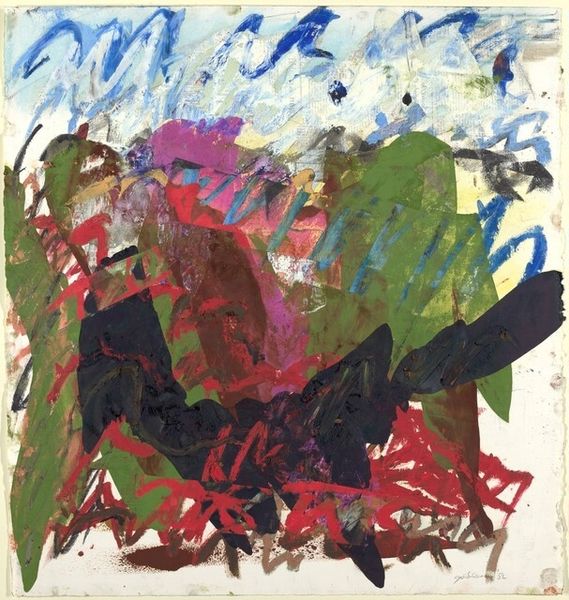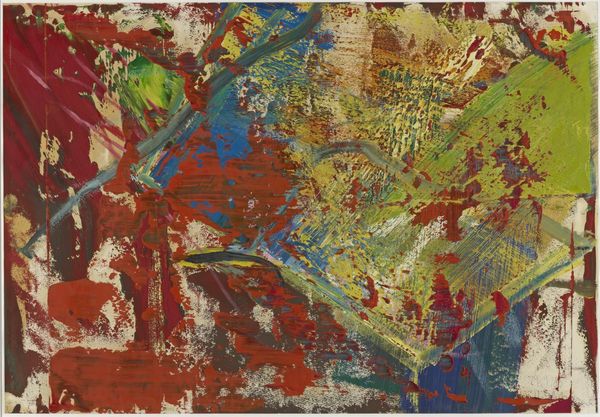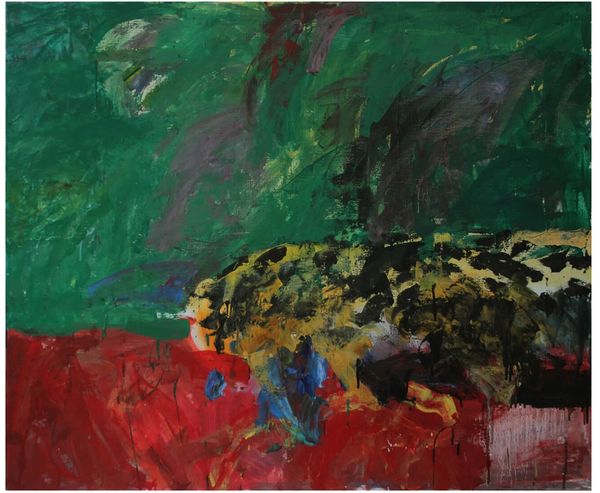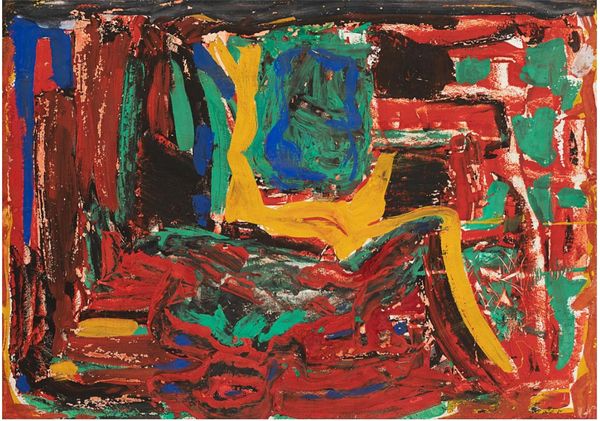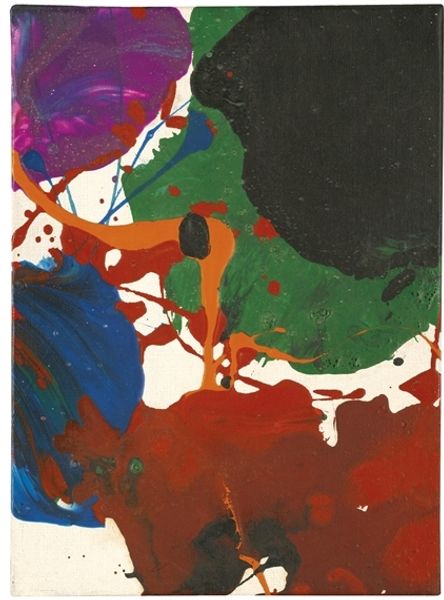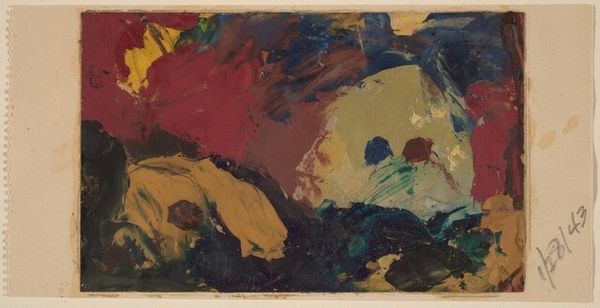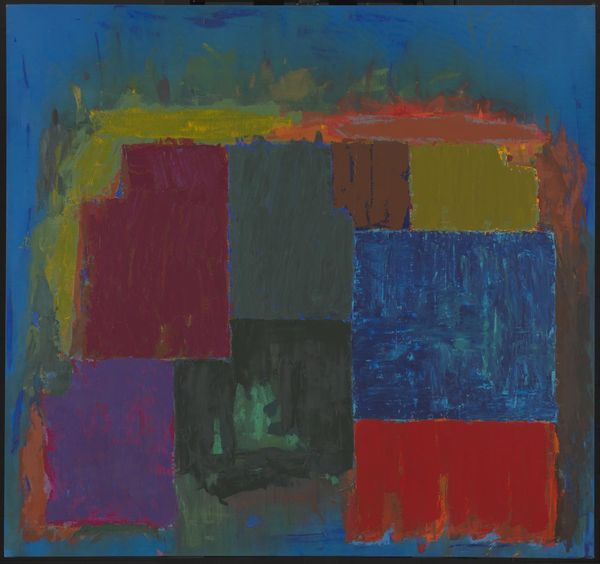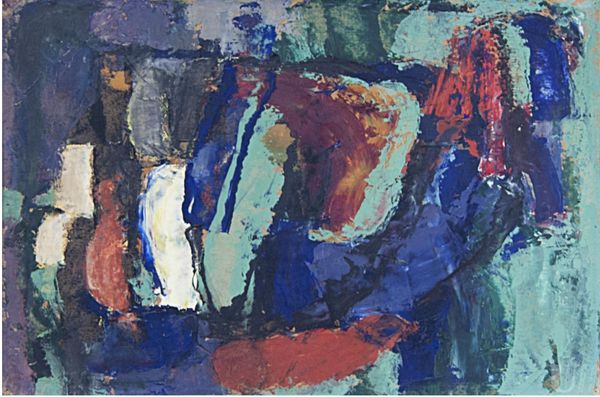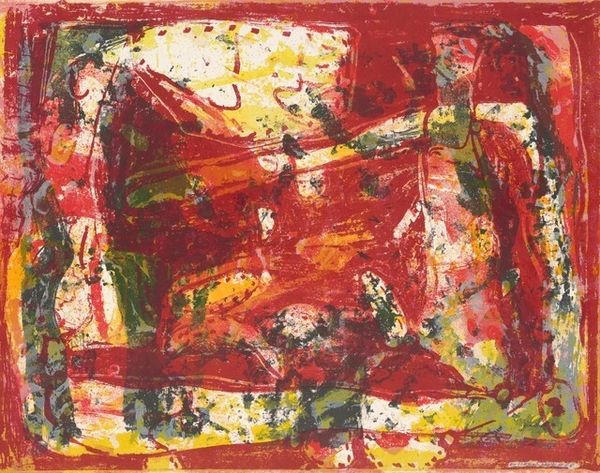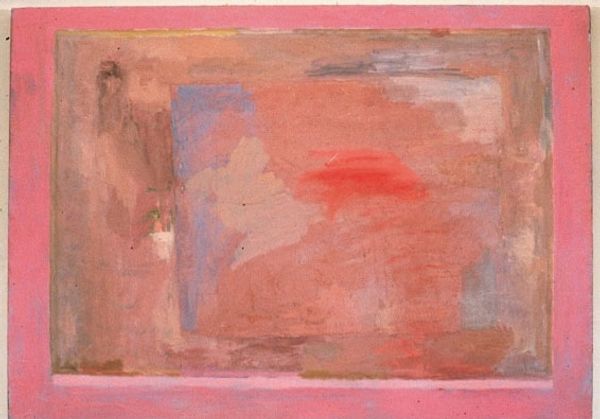
painting, oil-paint, acrylic-paint
#
abstract-expressionism
#
abstract expressionism
#
abstract painting
#
painting
#
oil-paint
#
landscape
#
acrylic-paint
#
acrylic on canvas
#
abstraction
Dimensions: overall: 134.6 x 211.5 cm (53 x 83 1/4 in.) framed: 137.5 x 214.6 x 3.8 cm (54 1/8 x 84 1/2 x 1 1/2 in.)
Copyright: National Gallery of Art: CC0 1.0
Curator: Grace Hartigan’s "Essex and Hester (Red)," created in 1958, pulls us into its bold chromatic depths. What is your first impression? Editor: It's dominated by that striking red, but the blue, green, and purple interrupt the canvas, lending it an energetic yet uneasy presence. The dark calligraphic elements feel almost agitated, like scars. Curator: I am struck by how the painting acts as an active response to Abstract Expressionism—a moment of reassessment regarding gender and artistic roles, specifically during that mid-century timeframe. What is the role for a woman to produce such raw, assertive imagery? Editor: And that very assertion—is that not an exploration of space within social structures? How can the artist reconfigure painting paradigms and disrupt aesthetic decorum? This might very well serve as a deliberate response to societal expectation for women and creation, especially during a historical period saturated by expectations for postwar "perfect" homes. Curator: The choice of medium is interesting. Hartigan opts for acrylic and oil paints on canvas, bringing together textures to deepen the complexity in materiality, don't you think? This, for me, pushes the narrative past aesthetic formalism to engage with politics inherent in material application. Editor: Absolutely, the medium allows for fluidity in applying paint to engage in questions surrounding landscape within Abstract Expressionism. What does abstraction permit Hartigan in the act of representation itself? What expectations and societal assumptions about “femininity” get played out in such a field? Curator: So many complex threads. "Essex and Hester (Red)" presents more than just aesthetic choices; it creates questions that allow the painting to actively critique broader issues related to both society and individual subjectivity. Editor: Yes, a reminder of art’s vital capacity not merely to mirror but also to question and to disrupt. Curator: A powerful closing thought as we encourage others to interpret it further!
Comments
No comments
Be the first to comment and join the conversation on the ultimate creative platform.


